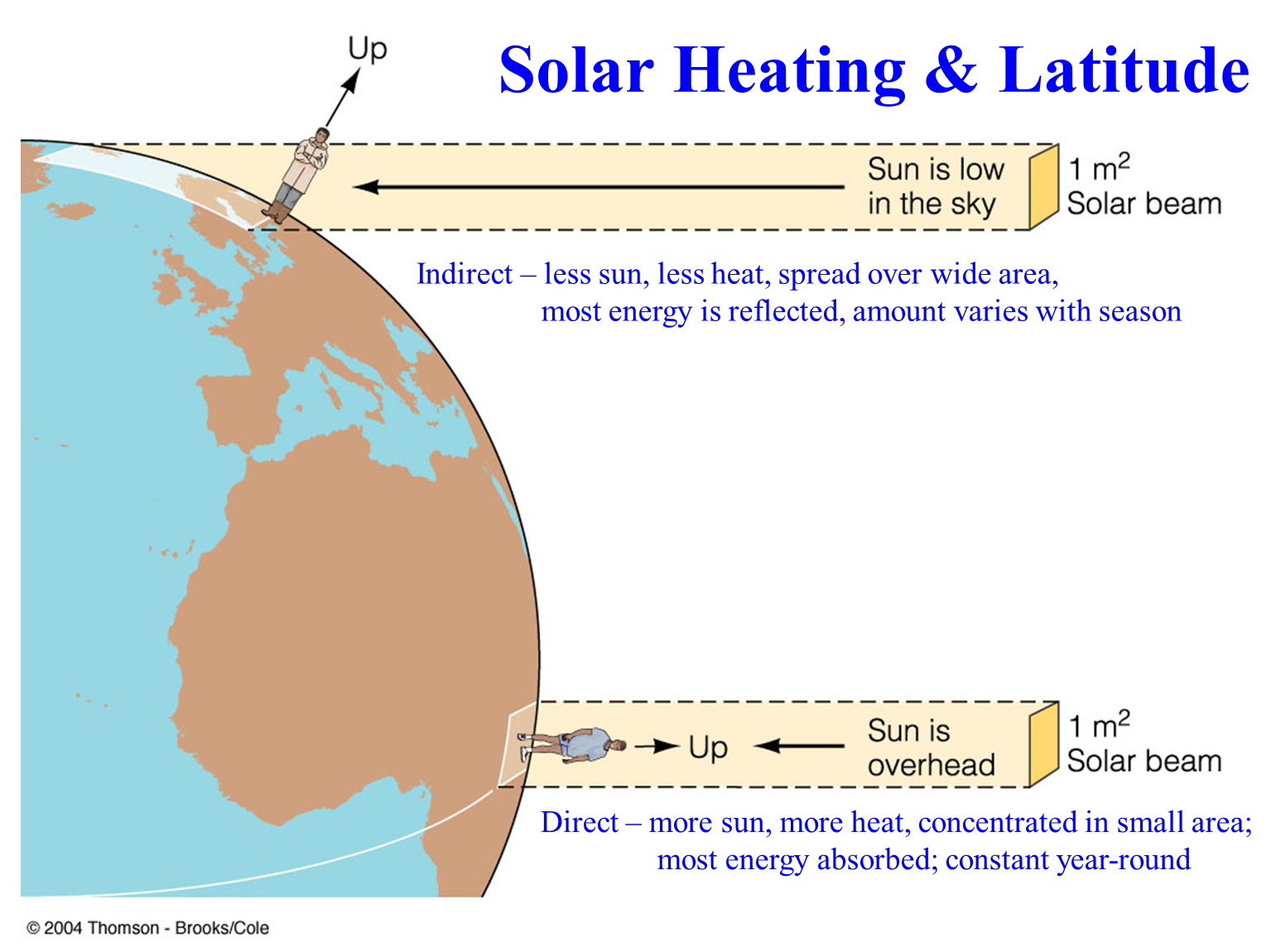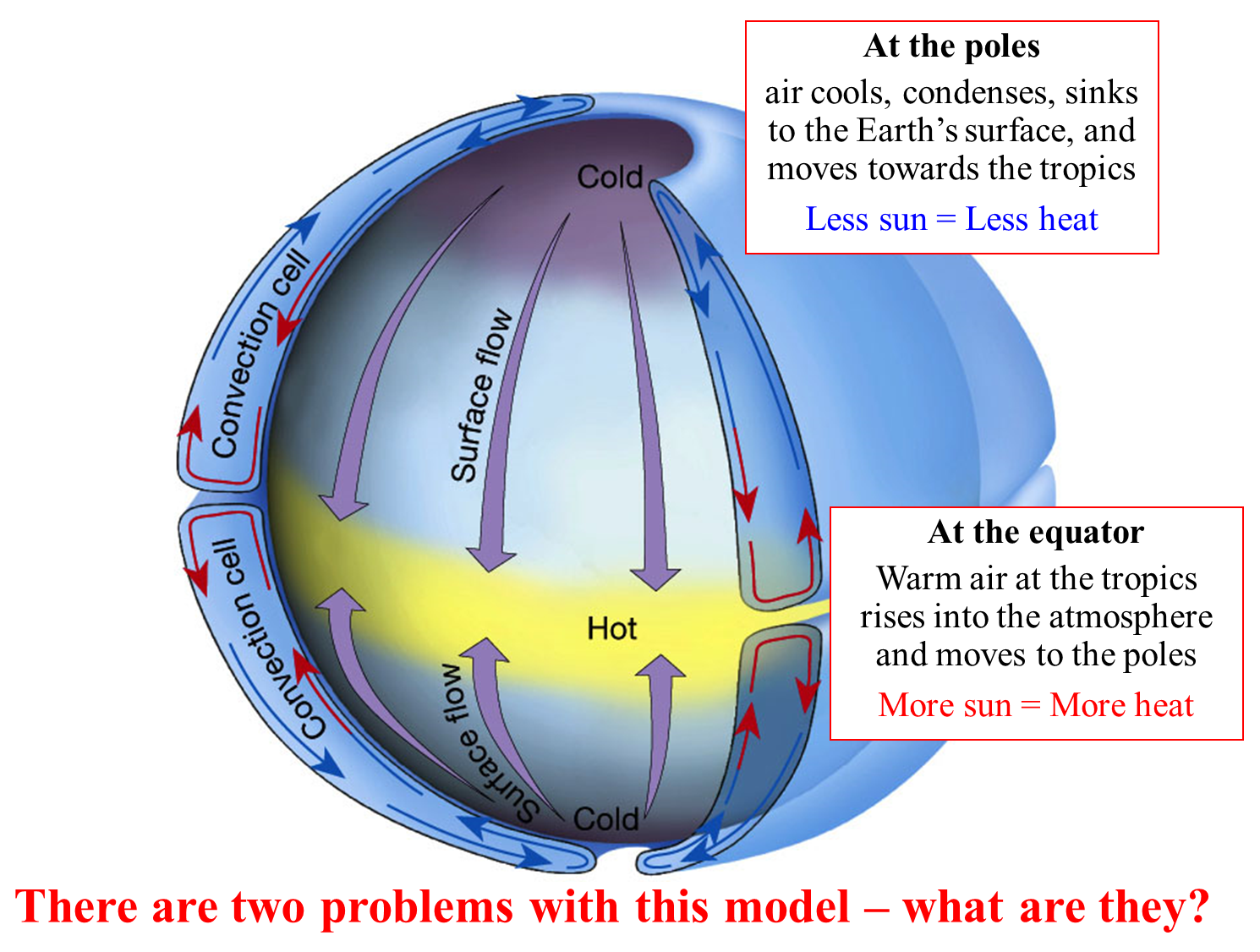Solar Heating
Solar Heating and Latitude
Equator - At the equator, the sunlight hits the Earth directly. The sunlight is concentrated over a small area nearly all year long, and most light is absorbed. The equitorial region is therefore much warmer.
Mid-latitudes - Sunlight hits the Earth at a slight angle. Amount of incoming sunlight varies with the season, as does the amount of light reflected. Temperatures therefore fluxuate season.
Polar regions - Sunlight hits the Earth at a low angle and the light is therefore spread out over a greater area. Most of the light is reflected. Finally, the amount of incoming light varies from three months of darkness during winter to three months of ligh during the summer. This makes the region is much colder.


Solar Heating and Atmospheric Circulation
Solar energy input is inequal on Earth, so a global air and water circulation system is needed to balance things.
As air warms, it expands, becomes less dense and rises up into the atmosphere. In the upper atmosphere, the air cools, condenses, becomes more dense, and falls down to the surface. This is called a convection current
So, at the Earth’s surface, the warm air at the tropics rises into the atmosphere and moves to the poles Once at the poles, air cools, condenses, sinks to the Earth’s surface, and moves towards the tropics

- Does not take the Earth’s rotation into account
- Earth’s axis is tilted ~23 ½º
<< Back |
||
